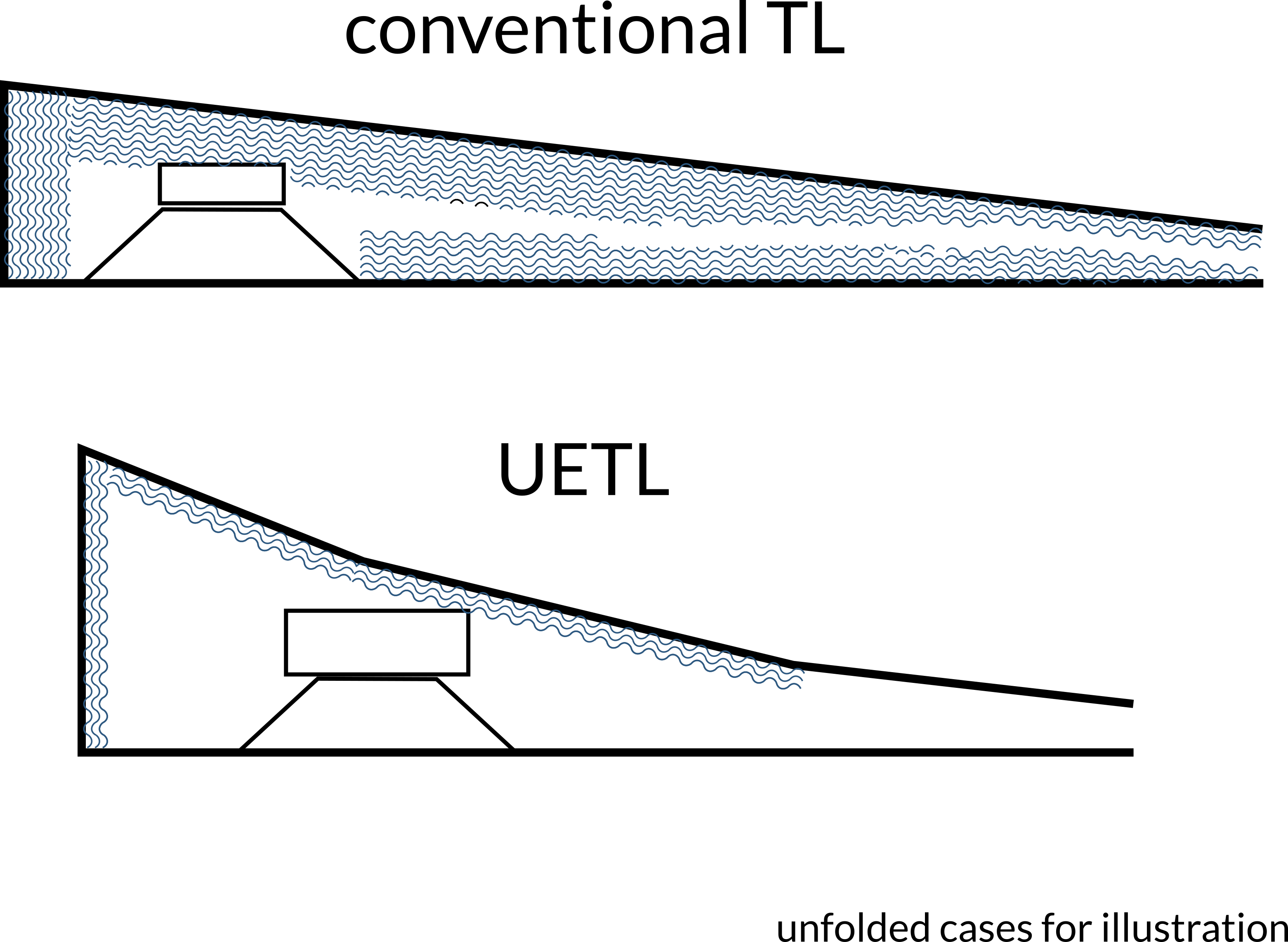
UnderExcited Transmission Line
The promise of all at once
Our first product, PATHWAY is based on our enclosure design principle, Under-Excited Transmission Line (UETL), which can be consider as very special case of transmission lines. It is not only cleaner and faster in the low and low-mid range than conventional TL, but also works exceedingly at very high motor strength/moving mass ratio.
During development, we found that if we wanted to approximate the sound quality of a bass horn in a smaller size, we couldn't use a loudspeaker with a weaker magnetic field / higher moving mass than would work well in a horn, despite all the known sizing rules. This has become quite obvious in our first, modest experiments. We now have plenty of ammunition to explain the phenomenon.
Since no dedicated speaker model existed, the development process involved writing custom acoustic modelling scripts to simulate new speaker concepts. These scripts provided the basis for the physical implementation of the first experiments. The shape of the final UeTL is at best similar to an inverted horn without a pressure chamber (actually it is not), i.e. no acoustic low-pass filtering at the excitation. This is a forced analogy, but in terms of operation, it can be seen as a kind of transition between a Transmission Line and a very low Q reflex cabinet.
Key features
- The narrowing character is stronger than in conventional loudspeakers, almost looks like an inverted horn
- The transmission line needs much less damping material than usual (it is good because damping materials are non-linear)
- The position of the driver on TL axis is critical for optimizing the"under-exciting" character
- It needs a very strong magnetic circuit and a very small moving mass
Its main attributes are achieved through a specific ratio of driver parameters.
Controlled
The description of the desired goal sounds like a tricky advertisement: a loudspeaker principle that evokes the qualities of the big bass horns, in a much more modest size. But we realised that the project was beginning to be a success: the level of control was such that some listeners were confused and asked similar questions:
- Is it a closed box? But it can't be... so what the heck is this?
Unwanted transmission line resonances eliminated
Under-excitation means that the Q factor of the system is low. This not only promises a good impulse response, but also means that secondary resonances are much less developed, or more precisely, less excited. Even with very little damping material, the sound is even and smooth, like a ported (reflex) or a passive diaphragm loudspeaker, but without the usual sluggish, one-plane character of the latter.
No transient compression
Transient compression is essentially unknown here. The flow is free, continuous and abundant, and the drivers developed for this project, have extremely low losses. This makes the sound airy and "brutal", even brutally airy. In other words, due to there are virtually no limits, the sound remains absolutely airy over the long term across the full bandwidth and at all tolerable sound pressures. It's fascinating.
Sensitive and grip
The UETL principle means that a low-efficiency, weakly magnetic driver is not needed for good bass extension, so the movement of the swinging system is dominated by a huge gap induction. Among its other benefits, it minimises the losses and distorting effects of mechanical anomalies in the suspension. Furthermore, as it has an average impedance of over 10 Ohms with a smooth impedance and electrical phase response, it is easily driven by even low-power triode amplifiers.
Controlled directivity also in the bass range - open and colorful bass-midrange
Impressively textured, coherent, colourful and deep. The sonic openness of the open baffle is confidently delivered, moreover, the controlled directivity makes it much more tolerant of placement and acoustic environment.
